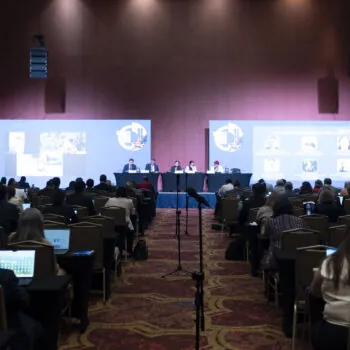Europe’s transition away from fossil gas is gaining momentum. With the recent energy crisis and rapid advancements in clean technologies, fossil gas demand is steadily declining across European member states. In 2022 alone, the EU reduced gas demand by 12%, with an even sharper drop of 20% in 2023. Projections show that, under the Fit-for-55 and REPowerEU initiatives, gas demand could fall by 30-50% by 2030. These shifts signal a clear trend: Europe’s journey toward a fossil gas-free future has begun.
Yet, findings from the recent E3G Gas Transition: What’s Next report identify the need for holistic planning across sectors – power, industry, households, workers and regions – to manage this declining gas demand.
To this effect, the EU has already enacted a set of legislative measures on gas demand reduction, and some plans and strategies are being deployed in certain regions. However, there remains a lack of specific tools and critical elements in the EU legal framework to support gas reduction measures and manage decarbonisation challenges at the regional level. The EU faces a choice: take an active role in managing the changes brought about by a declining share of fossil gas; or risk a chaotic and inequitable gas transition. Without an overarching management plan – including clear reduction trajectories and support mechanisms – cities and regions are left to handle the transition alone, risking a fragmented and unfair outcome.
Urban leaders in Europe’s gas transition
Across the EU, cities such as Rotterdam, Mannheim, and Augsburg, are already leading the way in planning and implementing a well-managed gas transition for their citizens. The German cities of Mannheim and Augsburg have clearly stated their ambition to shut down their gas network by 2035, empowering their citizens to switch to fossil gas alternatives. In Rotterdam’s Heindijk district, a clear plan to phase out fossil gas by 2027 is already underway. Rotterdam’s approach embodies key recommendations of a well-managed gas transition: strong community engagement, financial support to safeguard households from rising costs, and transparent choices for residents to shift from gas to district heating and heat pumps. With ambitious initiatives, these front-runner municipalities and regional governments are investing in new technologies to reduce future costs for remaining gas consumers while managing the long-term decrease in gas reliance.
Regional disparities across the EU
However, this kind of progress is uneven across the EU. While cities in Western and Northern Europe are advancing, those in Southern, Central, and Eastern Europe face challenges due to their longstanding gas dependence, as well as economic and political constraints.
This regional divide is further illustrated in the implementation of the mandatory local heating and cooling plans under the Energy Efficiency Directive (EED). The directive requires European member states to establish legal frameworks for local heat plans, and to empower local governments to develop and implement heating and cooling strategies. While the aim is to provide municipalities with the resources and capacity for a just and fair transition from gas in heating and cooling, studies reveal significant disparities across Europe. As of September 2024, nearly half of EU member states, primarily those in Central and Eastern Europe, have yet to set up these legal frameworks. Even where frameworks are in place, they are often hindered by a lack of financial, technical, and organisational support; insufficient human resources and skills; and limited access to energy-related and other geodata.
These barriers impede the effective implementation of heating and cooling plans, but they also have a broader impact. They compound the challenges faced by EU member states in transitioning their overall energy system in the next years. A lack of data, administrative resources and fiscal capacity further complicates a managed gas transition that must: enable gas industry workers to benefit from a clean energy future, secure public support among EU citizens, and transition the industry sector to greener energy sources.
The EU must step up
To ensure that the gas transition stays on its current reduction trajectory, the EU must address regional disparities that risk creating an uneven energy transition. Without targeted support and a robust EU framework, some regions will face growing challenges that deepen economic and social divides, threatening a cohesive and competitive union.
A comprehensive EU framework can mitigate these risks by addressing disparities not only between member states, but also within regions – ensuring that all citizens, workers, and industries are supported in this transition. As the EU begins a new political mandate, the discussions around affordable housing, the phase out of Russian fossil fuels and the ramp-up of the electrification agenda, present opportunities to address regional disparities in the gas transition. By responding to regional needs and taking a holistic perspective, the EU can step up to support a just and well-managed gas phase-down, contributing to a competitive, fair and socially inclusive energy transition.


